
History: Pioneering Innovation Since the Beginning
The Beaumont Fire Department pioneered several important innovations in technology and training methods including building the first search light truck in the world and establishing the first mutual aid organization in the USA. This would go on to serve as a model across the nation during national disasters.
Did you know? Initially, firefighters were not paid for their service, they paid for the privilege to service the community. The first fire truck was a pump pulled by mules? They were so well respected, Walter Cronkite visited as one of his first big national news stories. Learn about all that and much more digging into our fascinating history.

1838
Beaumont Founded
Beaumont officially became a town on December 16, 1838. Named after Mary Beaumont, wife of businessman Henry Millard, Beaumont was a center for cattle raisers and farmers in the early years. At this time, response to a fire was an unorganized effort using only leather buckets, wet tote sacks and blankets. Many times extinguishing a blaze was hopeless.

Late 1800s
Continued Growth
Beaumont became an important lumber and rice-milling town. With its strategic location on the Neches River and an active river port, Beaumont was ideally positioned to capitalize on the lumber boom of the late 19th century. During this period, the first commercial rice mill in Texas, Beaumont Rice Mill, was also founded. By 1881, the population of Beaumont had grown to about 1,620 people.
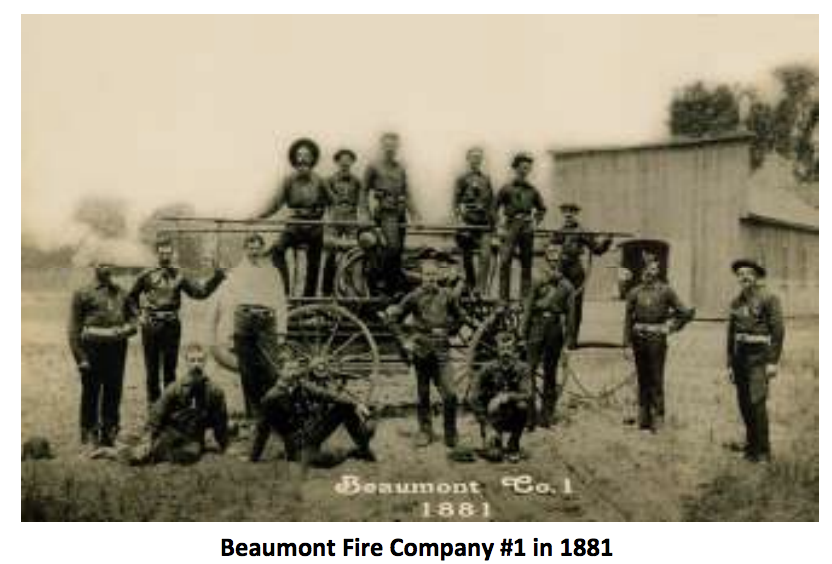
1881
Beaumont Fire Company #1 Established
On September 8, 1881, a large lumber yard fire helped the citizens of Beaumont recognize the need for organized fire protection. Soon after the fire, on October 18, 1881, a Grand Fireman’s Ball was held to collect money for the down payment on a rotary pump. A total of $56.85 was raised and the first piece of firefighting equipment in Beaumont was ordered. Then on December 19, 1881, a vote of the citizens committee created Beaumont Fire Company #1, consisting of 16 volunteer members. Edward L. “Ed” Wilson was credited for organizing the volunteer force.

1882
A Mule Pump is the First Piece of Equipment
The new rotary pump arrived, was mounted on a wagon, and pulled by two great black mules named Kate and Rody Wier. The firefighting wagon was originally kept in a small wooden building at Keith Park (where the Julie Rogers Theater now stands). To assist the volunteers, two deep wells were dug in 1884. One well was located at the intersection of Pearl and Crockett Streets and one at the corner of Crockett and Main Streets. The firefighters themselves were not paid for their service. In fact, they were willing to pay seventy-five cents dues every three months just for the privilege! Most of the revenue to operate the department originated from public contributions, additional capital that was raised by renting the fire mules to wood haulers, and the ladies holding bake sales.
1887
First Chief Named + First Ladder Truck Acquired
Fire Chief Ed C. Ogden (1842-1910) was named as the first recorded volunteer fire chief. The City received a second piece of fire equipment— its first ladder truck. The V. Weiss Hook and Ladder Company and other fire companies formed as the town continued to grow. Competition became keen among them, because a $5 award was given to the driver of the first team to arrive at a fire.
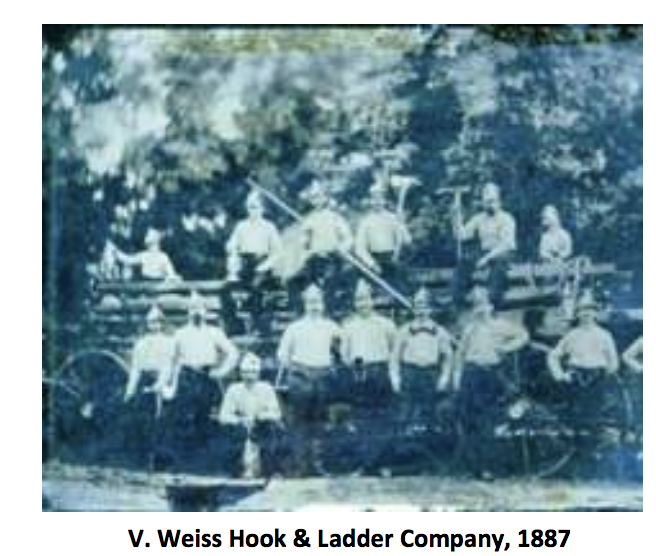
1890
Fireman’s Hall Established
The citizens erected a wooden structure in the 400 block of Walnut at Mulberry to store the fire apparatus and equipment belonging to the joint units of Beaumont Fire Company #1 and the V. Wiess Hook and Ladder Company. The structure became known as the Firemen's Hall. The Firemen’s Hall would serve not only as a storage shelter but a gathering place for ever increasing civic organizations. Members of the V. Wiess Hook and Ladder Company assembled books for its members and later opened its reading room to the public—giving the City its first public library.
1981
Second Wagon Acquired
In December 1891, another hose wagon was purchased. The Mechanic Hose Company #1 was formed and twenty-four-year-old Emmett Alverson Fletcher (1867-1943) would be elected foreman. Emmett A. Fletcher would later become instrumental not only in the history of the Beaumont Fire Department, but in the history of the City itself. It could be said that Emmett Fletcher lived in the most eventful era of Beaumont's rich history and that he left his mark on its transition from village to city.
1892
Second Fire Hall Constructed
In 1892, another hose wagon was purchased by Beaumont Lumber Company. It was designated as the Gilbert Protection Hose Company. With the new fire companies there was a need to construct a second fire hall, which was erected at Main and Gilbert Streets. The horses who were designated to the company apparatus were "Maude and Bill." The Fire Hall at Keith Park was razed in that same year.
1896-1898
First Paid Fire Chief and Staff
Mechanics Hose Co. #2 was formed in 1896. Between 1896 and 1898, 215 new buildings were erected in Beaumont at a face tax value of $276,000. In 1899, Ed Eastham was named the first paid Fire Chief for the City of Beaumont. The City had 12 paid firefighters and 24 American District Telegraph (ADT) fire alarm boxes. Eastham was paid $25 per month. He held the position from 1899-1918.

1901
Spindletop Gusher Fire
Several large fires occurred at Spindletop and in Beaumont during the years following the first gusher in 1901. Reports of a fire on March 4, 1901 recorded that a derrick, a boarding house and a box car were all consumed by flames that soared several hundred feet high. In 1902, the City installed a large steam whistle atop Eastern Texas Electric Company for fire notification. The number of blasts from the whistle would indicate the box number and location of a fire.
1903-1909
Fires Break Out as City Booms
By 1903, the BFD was a fully paid force. One of the challenges included keeping the horses from bogging down on the sulfur roads in clay and mud. And fires were everywhere—a 1904 fire at Gulf Oil in Port Arthur required assistance from Beaumont. One steamer and 500 feet of hose was sent by train to the fire scene. City officials became apprehensive about threats of devastating fires in the oil field area. There was a dramatic increase in population in Beaumont and citizens expressed concern for fire safety. The sleepy lumber camp became home to processing plants, storage facilities, and shipping, changing the course of fire history in the City. In 1904, the City put half down ($20,800) on the purchase of two steamers, two combination chemical/hose wagons, and eight horses with harnesses. By 1906, the City’s population had grown to 17,000. A young man named Stephen Douglas O’Connor moved to Beaumont and accepted a position at one of the two fire stations. His starting salary was $45 per month with 8 hours off in every seven days.
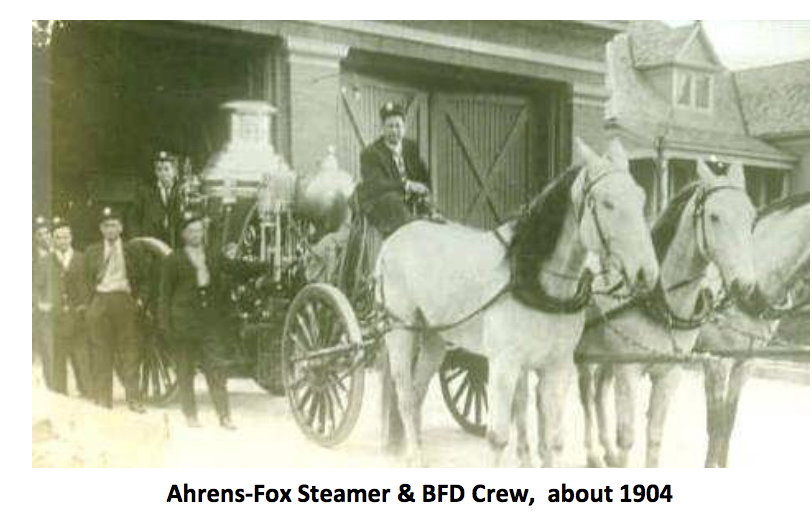
1906-1908
Horse-Drawn Ladder Truck + New Equipment
Several new apparatuses were added to the Beaumont Fire Department during the next several years including a 75-foot horse drawn ladder truck. Also in 1909, the wooden structure used to house firemen and apparatus was dismantled and a new Central Fire Station and City Hall was constructed in the same location at Walnut and Mulberry. A Gamewell Fire Alarm System was purchased from the City of Houston in 1910 to replace the old ADT system.
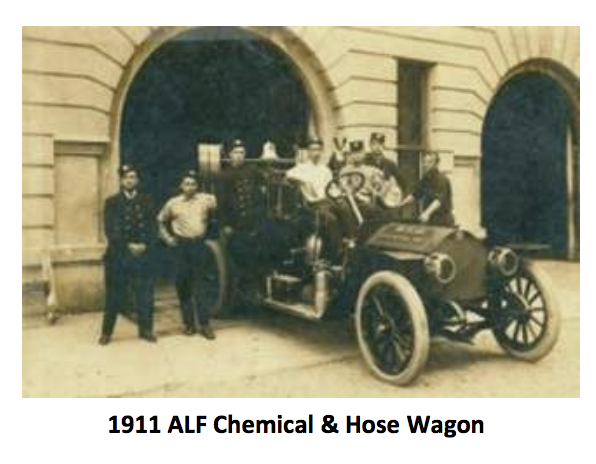
1911
First Motorize Truck
In 1911, the citizens witnessed the arrival of the first motorized fire truck. It was an American LaFrance combination Chemical and Hose Wagon containing a 40- gallon water tank and 1600 feet of fire hose. The truck was involved in an accident on Christmas day in 1914, where firefighter Bob Glass was killed. Glass was the first Beaumont firefighter to die in the line of duty. S. D. O’Connor was promoted to Captain at a substation in 1910. He was assigned as a Lieutenant at Central Fire Station in 1913. The next year he was promoted to Captain at Central and was named Assistant Chief by 1916. In 1918 he was named Fire Chief and remained in the position for 38 years (1918-1956). Under his leadership, all seven stations were transitioned from horse-drawn to motorized fire apparatus.
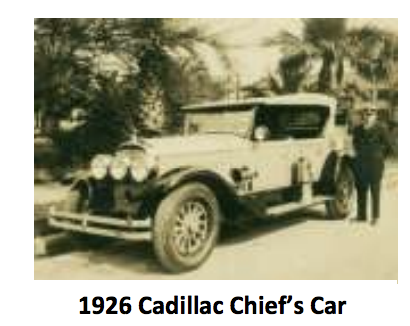
1925 – 1926
The Boom Years
The year 1925 saw the demise of the lumber industry and the second coming of Spindletop. Economic growth brought more people, high rise structures and “Millionaire Row” to Beaumont. The Gamewell Fire Alarm System purchased from Houston in 1910 was still in use, with 84 call boxes installed across the City. The Fire Chief’s car was one of the fanciest in the nation, a phaeton Cadillac with an aluminum body. By 1926, there were seven fire stations in town with 53 full-time firefighters. The population was 50,000. The City purchased an American LaFrance Type 12, 750 gpm pumper, which became Engine 5. Central Fire Station housed 28 men on-duty at all times, a triple combination hose and pump engine, a 75 -foot aerial ladder truck, a straight hose wagon, a combination hose and chemical wagon, the Fire Chief’s car and City electrician’s car. Firefighters worked 144 hours per week: 72 hours on-duty and 24 hours off duty, for a salary of $110 per month.
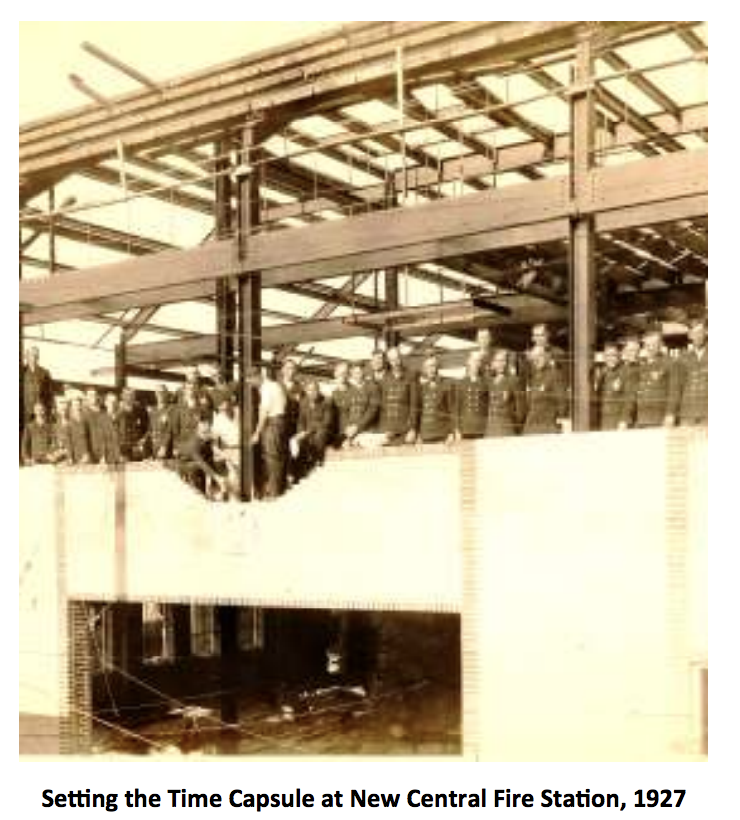
1927
New Central Fire Station
By 1927, the population of Beaumont had grown to 60,000 people. The City built a new Central Fire Station on the corner of Walnut and Mulberry. The cost of the new building was $85,000. It is still in use today. During construction, firefighters placed 10 cent pieces imbedded in metal plates bearing the names of every member serving in the department inside a copper box behind the stone eagle on the west side of the building. The time capsule also included other City and fire records. The Beaumont Fire Department then consisted of seven stations, 54 men, and 14 pieces of apparatus.

1930s
Pioneered New Training and Technologies
In 1930, Johnny Southwell designed an inter-communication speaker system (intercom) which enhanced communications between Central Fire Station and substations. They also established the "New Beaumont Fire College" where training and classes were held at Central Fire Station. The recreation room was converted into a complete school room with everything from a globe, two professors and 30 desks. Under the direction of Chief O’Connor, the fire department became well known across the State for its highly capable personnel. The fire department also was one of the first in Texas to: Replace the solid rubber tires on their equipment with pneumatic tires, pioneer the construction and use of one- and two-way radio equipment in fire trucks, send its firefighters to training schools out of town.
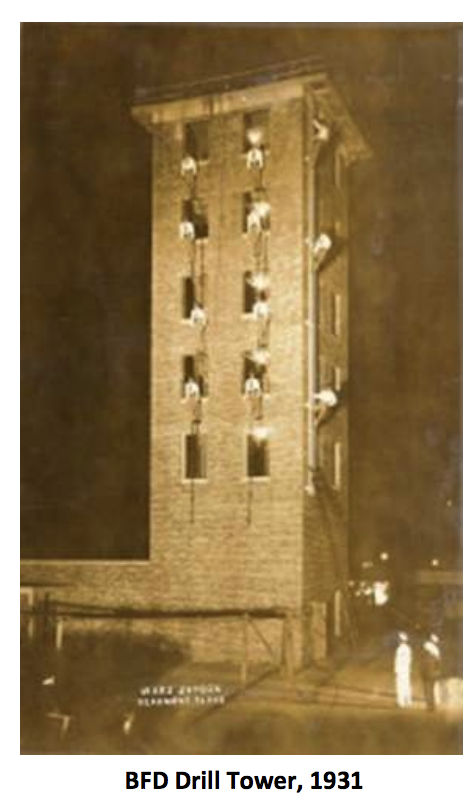
1930s
Continuing Education
The fire department stressed the importance of continuing job-related education. Chief O’Connor issued an invitation to any fireman in the area, including southeast Texas and southwest Louisiana to train with Beaumont firefighters. At this time, most promotions were awarded to individuals who had attended fire schools, brought back to Beaumont new and better methods to combat fires by sharing experience and knowledge on various firefighting tactics, and helping to advance the capabilities of other firefighters and the department. Giving Beaumont firefighters the opportunity to study advanced firefighting methods paid huge dividends to the citizens of Beaumont. A number of departments would send their firefighters to study with the Beaumont Fire Department. Beaumont’s reputation of being a well-trained department led the State Firemen’s Training School at A&M College to choose Beaumont firefighters to serve as instructors each summer since the fire school was founded.
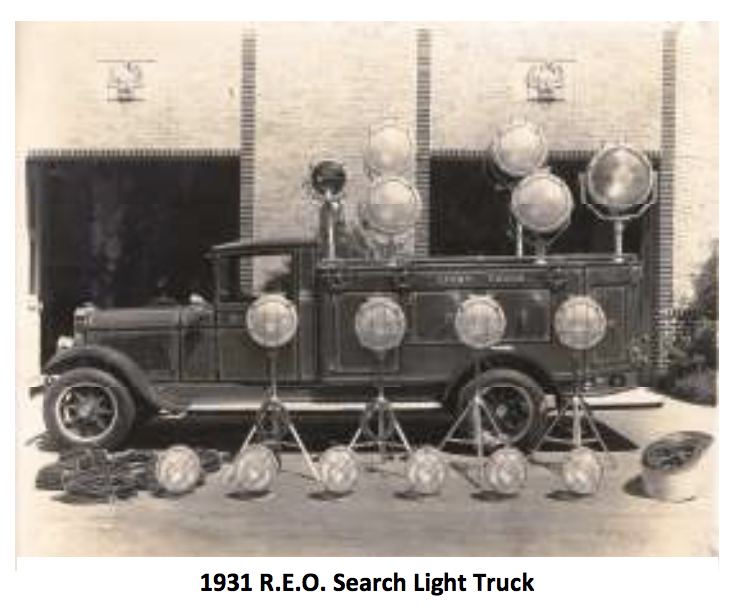
1931
Built First Search Light Truck in the World
With the aid of Lynn Gilbert, Blackie Corder and Ray Tanner, Southwell developed the idea of a search light truck. Using Southwell's design and a R.E.O. chassis, the group built the first search light truck in the world in the maintenance shop at Central Fire Station. The truck had a construction cost of $5,079.34 and went in service on March 21, 1931. It included a self-contained power plant, reel-out cables and elevators for the lights on top of the truck, which consisted of five, 1500-watt and a mammoth 2000-watt bulbs that cast a near blinding glare in all directions. A total of 17 huge lights were capable of transmitting 3,000,000 candle power with 11-1/2 kilowatts The year 1931 was a great year for capital programs in the fire department. On Sunday, August 23, 1931, the Beaumont Enterprise gave the following report on the fire department achievements as a result of a bond issue, "The erection of the drill tower and three modern and attractive fire stations to replace an equal number which has been outgrown…which included a fund for a new department building program. The new stations are Number 5, Concord Road and Grand Avenue; Number 7, McFaddin Avenue and First Street; and, Number 11, Sabine Pass Avenue."
1934
Union Chartered
In May 1934, members of the department filed for a union charter. After receiving the charter on November 29, 1934, and with a unanimous vote of the fire department’s members, employees became members of the International Association of Firefighters, Local Number 399. Members paid fifty cents a month for their union dues.
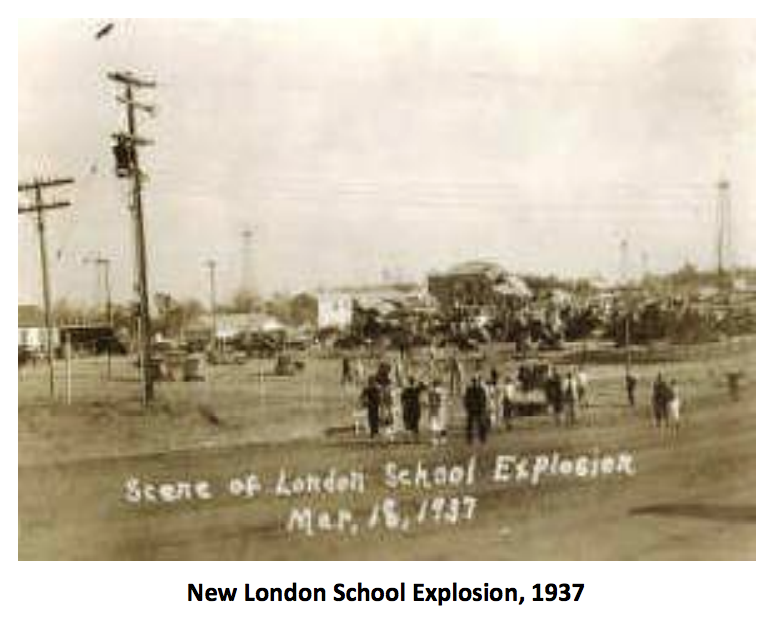
1937
Walter Cronkite Visits
The REO Light Truck responded to the New London School natural gas explosion in 1937, playing a vital role in rescue and recovery efforts. Walter Cronkite, only 21 years old at the time, hitched a ride past barricades set up at the New London School on the truck. It was his first exposure to national news. In 1939, the fire department began to operate on a two-platoon basis. This consisted of men working seventy-two hours on-duty and twenty-four hours off-duty. A number of the larger fire departments across the country had begun to operate on this basis during the 1930s, and found it highly successful for the firemen, their families and the department.
1941
Chief O’Connor Appointed District Coordinator
Just two days after the United States entered World War II, on December 9, 1941, Chief O’Connor was appointed District Coordinator for Fire Prevention and Control for eight counties in Southeast Texas. The vast amount of petrochemical refining in the area made southeast Texas a large target for military forces wanting to cripple the United States war efforts. The fire department was able to acquire two pumpers during the war. However, due to war time shortages, the pumpers, which were manufactured to war time specifications, lacked any decorative New London School Explosion, 1937 7 metal trims. Despite the additional apparatus, the department dwindled during the war to 56 men at a time when it should have numbered at least 125, because of the shortage of able-bodied men.
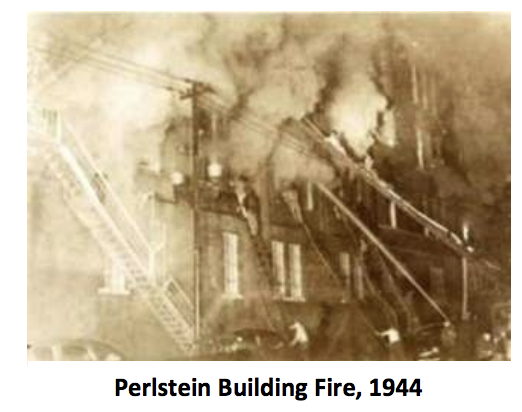
1944
Largest Blaze in Beaumont History
On August 7, 1944, the fire department faced its largest blaze to date. The Perlstein Building, Beaumont’s first high rise, was destroyed when fire broke out in the elevator shaft and spread quickly throughout the building. Fire departments from as far as Houston responded, but the blaze was too much and the building was lost. Fourteen firemen were hospitalized and the loss was calculated at $358,000, an astounding amount for the time.
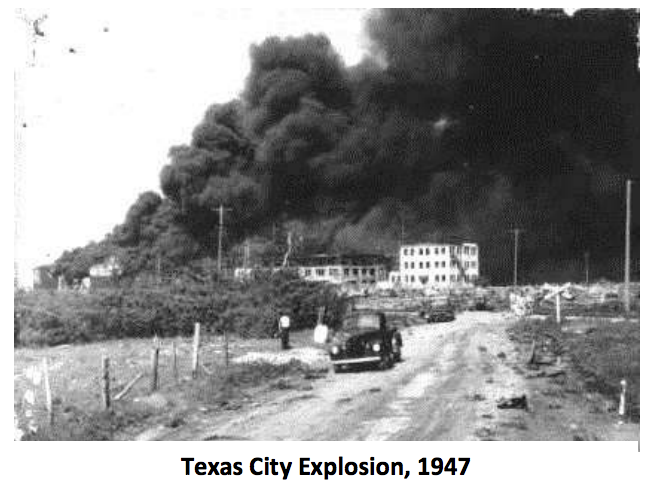
1947
Beaumont Assists Neighboring Communities
In Texas City, Texas on April 16, 1947, the Grandcamp, a French ship containing tons of ammonium nitrate, exploded in the docks – killing all but one of the Texas City Volunteer Fire Department and destroying all four of their trucks. In minutes, the small coastal town was turned into a disaster scene not unlike a war-ravaged country. Veterans declared they had never witnessed such destruction and death in their lives. Tremors from the blast were felt as far as Louisiana, and within three hours Chief O’Connor dispatched the REO Light Truck and a crew of men to assist the people of Texas City. Under a new mayor, Chief O’Connor and the firefighters petitioned the citizens of Beaumont and won a bond issue that would provide the department with much needed money for upgrades. Equipped at that time to serve a town of about 35,000, the fire department was serving a city of over 100,000. For the first time since before the war, the fire department would be able to build new stations, upgrade radio communications and purchase new apparatus and hoses.
1947
First Mutual Aid Organization in the US Established
The Texas City explosion had made City leaders aware that the Golden Triangle, as a region, was not adequately prepared for any large-scale disaster. In response, municipal and outlying fire departments, local and State law enforcement groups, and major industries came together to form the Sabine-Neches Chiefs Association (SNCA). The SNCA was the first mutual aid organization in the United States and was used as a model for the establishment of similar type organizations across the State and the nation. Fire Station No. 2 was built in 1947 at the corner of Wilson and Ironton. Fire Station No. 3 was built in 1949 at the corner of Kenneth & Brockman. Fire Station 4 was built in 1954 and remains at the corner of Gladys and Lucas. By the 1950s, men in the department worked on a twenty-four hours on-duty and twenty-four hours off-duty schedule.
1956
Chief O’Connor Retires
On December 31, 1956, Chief O’Connor, having reached the mandatory retirement age of 70, burned his bunker gear and left the Beaumont Fire Department for the last time as Chief. O’Connor served the department for forty-eight years, thirty-eight of those as the Fire Chief. O’Connor was succeeded by J.N. Richardson. J. N. "Newt" Richardson (1896-1963), served 42 years in the Department (1917-1959). A native of Tip Top, Texas, near Votaw, Polk County, he came to Beaumont in 1917. He joined the fire department on March 22, 1917, at the age of 24. He served in World War I. In 1930, he attended the Fire College in Los Angeles and was appointed Assistant Chief the following year. Also in 1931, he served as an instructor at Texas A & M College Fireman's Training School. Chief Richardson was injured four times during his career, the most serious when he fell from the balcony at the old Liberty Theater in 1934. He was appointed Chief of the Fire Department on January 1, 1957, and would serve until January 1, 1959, where he would become one of twenty employees, including four other firemen, who were automatically retired under a City retirement ordinance by virtue of being 65 years or older.
1957
Beaumont Doubles in Size Through Annexation
The City of Beaumont literally doubled its size overnight through annexation. The area being annexed went north to Pine Island Bayou which included the Voth-Rosedale additions, west to Amelia area and south, almost 12,000 feet past the present-day Fannett Road. It would consist of an area 40.20 square miles and increase the City's population from 88,000 to 119,980 citizens. The transaction was made final on December 17, 1957 under the administration of Mayor Jimmy P. Cokinos. Though the area to be covered doubled, number of fire stations, apparatus and firefighters was not increased at that time.
1960s
Third Shift Added
Charles A. “Red” Chriswell was appointed Fire Chief on January 1, 1960. Later that year, State civil service was passed by the voters in Beaumont. As a result, a third shift was added (C-Shift), and 40 additional firefighters were hired. This was the largest staffing increase since the hiring of twelve additional men in 1951. The new shift rotation became twenty-four hours on-duty with forty-eight hours off-duty. New equipment was also purchased in 1960. Insurance Underwriters demanded that the City supply the department with adequate pumpers. In a city that required at least 13 trucks, only 7 of the 8 Beaumont had were operational. By the end of the year, four new 1960 International pumpers had arrived. Fire Station No. 8 and Fire Station No. 10 were constructed in 1965.

1960s
“Flame City” Established as a Training Ground
A number of new developments in training and technology occurred in 1966 with the establishment of “Flame City.” Built on reclaimed land at the city dump from salvaged and donated materials, Flame City became the new training grounds for Beaumont and area firefighters. The training grounds included a butane tank, simulated well head, gasoline tank truck, gasoline tank, and oil pits. These were used to train the men in firefighting techniques for oil or chemical fires. The department also acquired four MSA canisters for use in very smoky buildings that were carried on Engines 1 and 12.
1968
Station Districts Established
The fire department divided its fire boundaries into three districts. Each district was assigned a District Chief in charge of a number of stations. Each station was assigned a Captain. District Chiefs reported to a Deputy Chief, who was responsible for the entire shift.
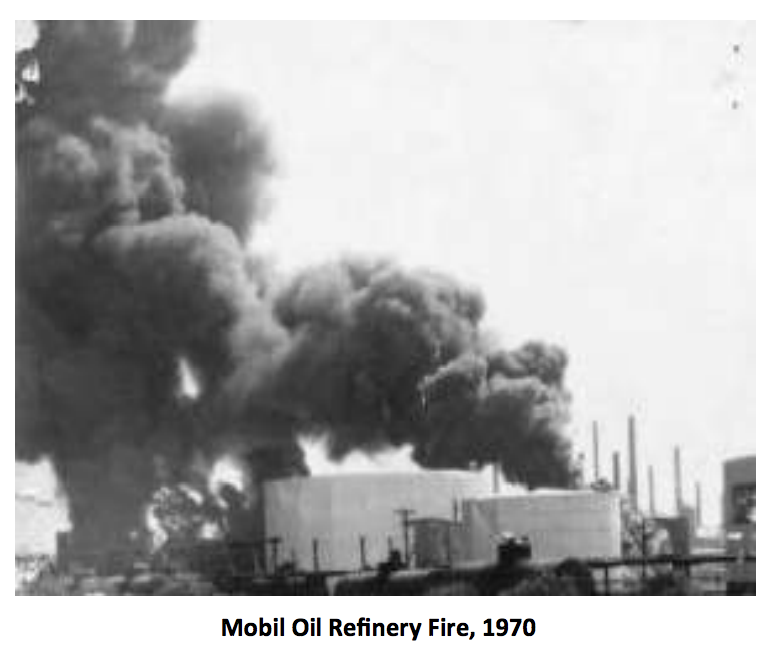
1970s
Refinery Fires Breakout
Because of its close proximity to numerous industries, Beaumont responded to several large refinery fires, including a huge fire at Mobil Oil Refinery on September 17, 1970. A bolt of lightning allegedly struck a storage tank setting off a chain reaction of explosions in the tank area. At the end of 1970, the 1901 Gamewell Fire Alarm System (currently on exhibit at the Fire Museum of Texas), which had been purchased from the Houston Fire Department in 1910, was finally retired. In 1974, a large fire resulted in the Goodyear Chemical Plant, resulting in a series of explosions. Flames reportedly mushroomed more than 600 feet above the plant.
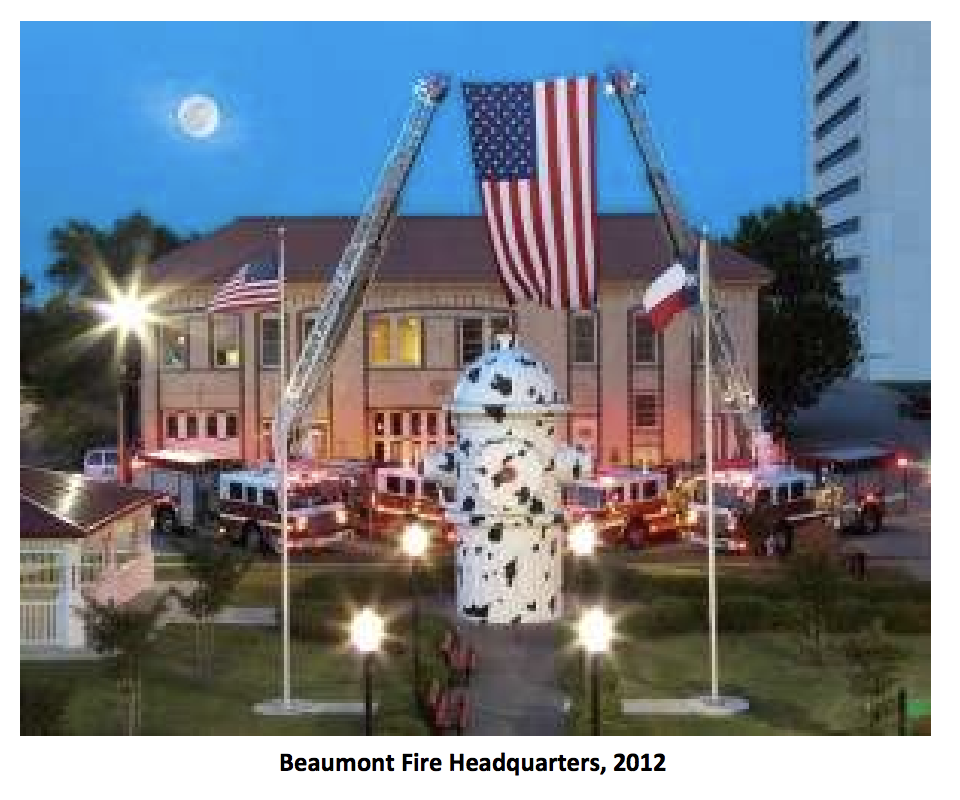
1980s
Fire Museum Established
Chief Shelton organized the Beaumont Fire Department Historical Museum in the early 1980s. When the Fire Museum of Texas, operated by the State Firemen’s and Fire Marshal’s Association went bankrupt in 1986, Shelton was successful at having some of the collections and name moved to Beaumont. The department and its fire museum also received national attention in 1989 with the opening of the Fire Safety Activity Center. The center used interactive methods to teach children fire and home safety behaviors outlined in the National Fire Protection Association’s "Learn Not to Burn" curriculum. Designed and constructed by Firefighters Anne Huff and Eddy Byerly, the center was the first of its kind in the nation. Chief Shelton was elected as a Commissioner for the Port of Beaumont and retired on December 31, 1995
2010-2020s
Facilities Upgraded
Three new fire stations constructed including a Headquarters annex building. Fire Station No. 2 was relocated to 5220 Helbig, replacing the facility constructed in 1947. Fire Station No. 11 will was relocated to 525 Royal, replacing the facility constructed in 1931. Fire Station No. 1 was relocated to the corner of Caldwell and Gulf Street, replacing the facility constructed in 1981. The Fire Headquarters annex will provide needed storage and office space for the department’s Logistics and Planning Sections.
DID YOU KNOW?
In the early days, the fire department was also responsible for traffic signaling, communications, and the electrical department. In 1926, John D. “Johnny” Southwell, the City’s electrician, designed and installed Beaumont’s first traffic signal and underground cable for the police department’s telegraph system. A few years later he designed and built the police and fire radio communications system, the seventh in the nation.
Useful Links
Contact Us
Available 24/7 to Serve You
